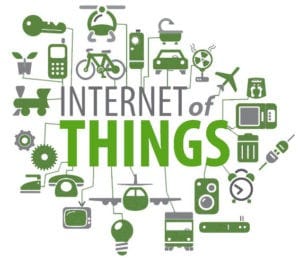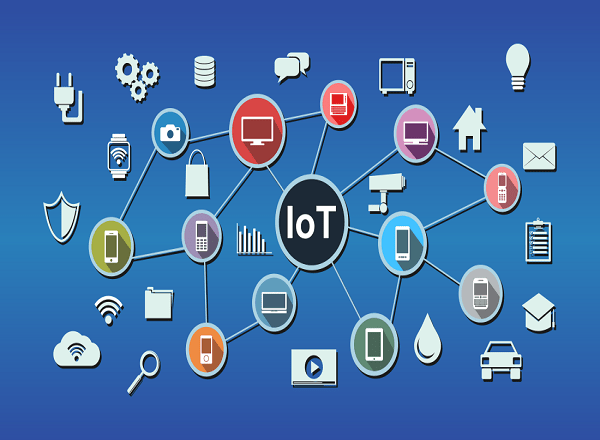Curated by Anindeeta Chakraborty
Accelerators are tailored or readymade templates that can will help you build IoT application faster and more easily

The production and manufacturing industry, which started way back in 18th century, have seen various development phases.
The one most important thing that happened when first industrial revolution took place was that we started using steam power to run our industries. The second industrial revolution that started in 20th century led to the use of electrical energy as a source of energy to run the industries. Then came the most important stuff, computers and other technologies like the microcontrollers.
In the next industrial revolution, which is coming, IOT will play an important role. So, if you wish to gain a competitive edge over your competitors and want to accelerate fast and be a part of this upcoming fourth industrial revolution, implementation of IOT in your industry is important. This is where accelerators come into picture.
Vision of Industry 4.0
The vision of the next generation of the industry is that every product should have information of the production requirements.
This means that every product should know what you are producing, what data is coming out of the production line as well as efficiency of the production line. Also, one should be able to configure the industrial production system. For example, if there is a production line which is going on, you should be able to pick and choose, remove it, add new stuff, and see how these problems can be fixed and where those problem are. Everything should be automated, that is there should be a flexible configuration of production.
Next is the decision-making system. In a car manufacturing industry, how will you make decision when something goes wrong in your systems? Suppose a robotic system fails or if more temperature is being consumed than you expected.
IF YOU WANT TO ACCELERATE FAST AND BE A PART OF THIS UPCOMING FOURTH INDUSTRIAL REVOLUTION, IMPLEMENTATION OF IOT IN YOUR INDUSTRY IS IMPORTANT.
Industry 4.0 says all these things should be automated. Human interaction is only about decision making – you have a data and you have to make a decision out of this data. You should have a centralised controlling. That means there should be no need for you to go to the production line and sit there to control the stuff. You should be able to understand how to enable it in centralised way.
These are the changes that industry 4.0 will bring in.
Challenges in Building an IoT Application
You have an IOT roadmap and you have made the decision to put all the IoT standards and get all the information from your manufacturing units globally. Sounds great! But it is not that easy to build an IoT application. One of the challenges is that it is time consuming. You need to understand the business use cases, how to get the analysis and how to do predictive maintenance. Customisation is another thing that you will need to focus on. If you do not plan properly, then the customising these things will be a challenge.
Among all these, security is the biggest challenge. The data which you are creating on the IOT front need to be secured.
These are the three major challenges that you might face while building an IoT application. This is the reason why you need to go with the accelerators.
What are accelerators?
These are tailored or readymade templates that can help you get started and build an IoT application. The codes are available on the Github, you can just pick it, change it, customize it and start using it in your manufacturing production line.
When you have the data and all the required parameters, all you need to do is to just have the sensors and push the data from the sensors to the microcontrollers, and from there push it to the cloud. Once it is on the cloud, you have all the data ready.
SECURITY IS THE BIGGEST CHALLENGE IN IOT APPLICATION. THE DATA WHICH YOU ARE CREATING ON THE IOT FRONT NEED TO BE SECURED.
Azure provides two parts here. Azure IOT hub allows you to flexibly connect to it and once connected, you can push the data to the UI. Then from the UI, using different parameters, you can do many things. You can use the data to see what is happening in the manufacturing line.
Thus, accelerators will help you build IoT application faster and more easily. It will also help speed up your production so that you can have an edge over your competitors. Moreover, you can also customise it. This means that all the codes we have written are available on Github – you can access them, change them and use them in your production line.
So, basically accelerator is nothing but a template which you can use it for any IoT scenario.
IoT accelerators provided by Azure
A few of the things that Azure provides as a template are remote monitoring system, device simulation, connected factory and predictive maintenance.
Remote monitoring system: If you have manufacturing units all over the globe, you can sit at a place and monitor everything from the dashboard.
Device simulation: -Before you put all the things in production, you can do a device simulation.
Predictive maintenance: You can use some Azure insights or edge computing to fix problems in some of the scenarios. All these can be used to do predictive maintenance and calculate time, like how many hours a particular device or equipment will run through.
Connected factory: It offers a dashboard of your production line – a global view of things happening in the production line.
So, basically the approach is very simple. You have to first determine what you want from a use case, then use a simulation and see what you want to build. Next connect all your equipment and go for visualisation, then build the operations and do all the scenarios with respect to scale.
About the author –
The above article is an extract from a speech given by Vivek Sridhar, Sr. Product Marketing Manager – Microsoft Azure, at the IOTSHOW.IN 2019 in Bangalore.
Sridha has 12 plus years of experience as a Software Developer/Software Architect and DevOps Architect in Enterprise Software Development. He has strong engineering expertise in Automation Development (DevOps &QA) and developing enterprise – level software products.
He is experienced in launching products from inception to realization and improving it further as per the need and demand. He has published three papers in international forums.









